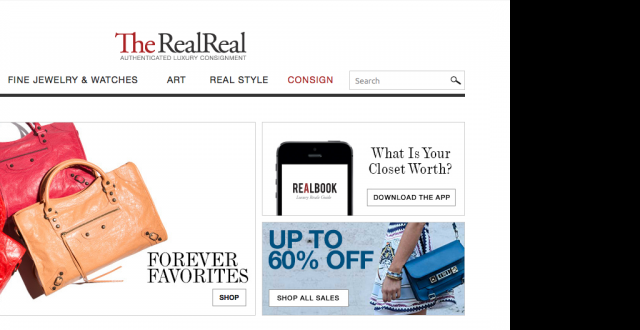
When shelling out thousands of dollars for designer fashion and accessories, there are a lot of factors to consider. Some people spend months—even years—debating the color, size and brand. Aspects such as the location of a clasp or the grain of leather are analyzed with care. But are we missing something? Should future resale value play a larger factor?
An “investment piece” should be exactly that: a purchase intended to provide additional value in the future. It can, however, be difficult to anticipate. Fortunately for us, online consignment site The Real Real has released a slew of new data to help inform our decisions. Their resale value app, dubbed “RealBook,” has compiled and analyzed data from past purchases on the site.
Think of it as Kelley Blue Book for fashion. With more than 500 brands and and 500,000 individual sales since 2011, the platform pits designers against each other in a value battle royal.
While the main site is a members only affair, RealBook has been made available to all, and can be downloaded for free from the iTunes app store. Thousands of consumers around the globe are now flocking to the platform to analyze and justify their luxury purchases.
Much of the information seems fairly intuitive. For example, Chanel, Hermès and Christian Louboutin hold value the longest, with Gucci and Louis Vuitton trailing close behind. Cartier, David Yurman and Van Cleef and Arpels lead the charge for watches and jewelry.
Coughing up for a Tod’s bag, however, is akin to money flushed down the toilet. Purchases from Marc Jacobs, Versace and Etro are likely to suffer a similar fate.
So why do some brands hold value more than others? For one, brands are constantly influx. The appearance of a new creative director or a major rebranding effort can have a drastic impact on demand. Think YSL becoming Saint Laurent in 2012. These changes can create buzz around a specific brand or bag, making their price (and resale value) soar.
Another factor is prestige. Does the brand maintain outlet stores? Can you find their items for sale? Are they ever on discount sites like RueLaLa, BlueFly or Gilt? An item that is difficult to find is perceived as having increased value and desirability, and is therefore worth the additional cash. Take Chanel for example: Consumers can’t even purchase fashion or handbags on the brand’s own website. Buyers are forced to schlep to the Chanel store, or to an approved, high-end vendor like Neiman Marcus. There is no doubt that this brand integrity contributes to the high resale value of their goods.
In contrast, Marc Jacobs maintains several outlets stores in the Tri-state Area alone, and can be easily found at discount prices. A Century 21 store in Lower Manhattan was proudly displaying dozens of the brand’s bags. This leads educated shoppers to view the brand as debased and impure.
The RealBook app is a huge advancement for those looking to become smart, savvy shoppers in a digital age. With millions of data points at our fingertips, we encourage all consumers to research their decisions before making a large purchase.




















